NEA Baptist Medical Campus
Committed to Community Healthcare
Driven by technology, the leading edge of architecture incorporates community engagement and research-informed design. Evidence-based healthcare is a prime example of socially engaged architecture- and the new NEA Baptist Medical Campus puts the concept into practice. Located in Jonesboro, AR, the nearly 800,000 square-foot replacement facility combines the NEA Baptist Memorial Hospital, the specialists of the NEA Baptist Clinic and the Fowler Family Center for Cancer Care for high-efficiency integration.
The resulting buildings are more than physical edifices. “Our vision statement is, ‘Moving forward together to create environments that shape lives,’” says Stephanie Wennerlund, an interior designer at Earl Swensson & Associates (ESa), the Nashville, Tenn.-based architecture firm commissioned for the project.
Executing a plan of this scope requires strong partnerships from conception to completion. ESa worked closely with subject matter experts and stakeholders- including the facilities director and the CNOs for the hospital and clinic- to design an interior that meets both functional and aesthetic requirements. From there, Nashville, Tenn.-based Steve Ward & Associates managed the production and installation of the casework and custom millwork for the project- supported by trusted relationships with fabricators and material suppliers, including Wilsonart.
Designed as a Community Investment
The NEA Baptist Memorial Campus is one of the first facilities to connect clinical care with hospital care on the same floor, making it easy for patients to access- and staff to provide- cohesive treatment. “Previously, there were multiple clinics spread all over the area,” says Wennerlund. “It was a big undertaking to consolidate under one roof, requiring a lot of coordination. Part of our job was to make that shift manageable for patients accustomed to smaller-scale offices and we addressed this with intentional wayfinding, through signage and architectural cues.
“The patient population covers a pretty big geographic radius, from farmland to Memphis. It was important to make the facility comfortable without being ostentatious,” says Wennerlund. The challenge was to make sure the interior looked nice while simultaneously functioning as a healthcare environment. Where it’s appropriate, natural products were used, but other areas of a hospital that require cleanability or durability demanded engineered materials to achieve evidence-based design goals.
“One of the ways we used architectural cues to address wayfinding was through a shift in wood tones in transitioning from public areas to patient areas. We used darker wood tones for wall cladding, column wraps, and bulkheads, such as Colombian Walnut, in the lobby and public spaces. Lighter tones, such as Brazilwood, were used for column wraps, casegoods, and nurse stations in the patient areas,” says Wennerlund. “The finishes were chosen to be warm and healing. The word hospital is in the word hospitality, and this was emphasized throughout the design because outcomes are better when people feel at ease.”
With nearly 100 physicians practicing in 35 specialties, orienting and creating a sense of familiarity is paramount to the project. The lobby welcomes visitors with abundant natural light and rich, warm finishes. Three-story tall columns wrapped in Wilsonart® Compact Laminate stretch from floor to ceiling. The material is also used at soffits, down the corridor and again at the elevator lobby, creating a natural sense of traffic flow. “It picks up again at every elevator entry on each floor, and repeats in the wall cladding at the nurses’ station,” says Wennerlund, “as an architectural way of showing visitors where they are and where they need to go.” Once again, a subtle shift from public spaces to patient areas is indicated by the lighter-tone Wilsonart HPL used in the casework and custom built nurses’ stations.
Trusted Relationships
The casework and millwork package for NEA Baptist was managed by Steve Ward & Associates, a casework dealer, fabricator and installation company specializing in healthcare, education and laboratory projects. “We’ve been in business for nearly 40 years, in part because we operate on the premise of honoring people,” says Chris Ryckman, director of project management for Steve Ward & Associates. “We align ourselves with manufacturers that reliably produce standard cabinetry, OEMs capable of fabricating components out of specialty materials and suppliers we trust to service our in-house custom millwork shop.”
As a project management company, Steve Ward & Associates streamlines progress and controls costs by reducing change orders and design/construction conflicts. It also assumes a lot of the risk. “We strategically decide which materials and manufacturers we think are best for each application, and we use a lot of Wilsonart. Our customers count on us to deliver quality end products,” says Ryckman. “No matter what happens on the job, it is Steve Ward & Associates’ responsibility to keep the project on schedule and within budget. Our established suppliers help us build customer relationships.”
Planning for Future Impact
Today’s healing environments are designed with the future in mind. Conceptually, healthcare systems use data to predict the developing needs of the populations served and time phase expansion accordingly. Functionally, finishes are specified to maximize the comfort of patients and staff while withstanding years of use.
“Safety and cleanliness are priority. We choose products that are scrubbable and impact resistant,” says Wennerlund. “HPL performs really well for casework and architectural features. In the corridors and behind the headwalls in patient rooms we used Wilsonart’s solid phenolic panels.” Also known as compact laminate, solid phenolic is an architectural panel made by saturating many sheets of kraft paper in phenolic resin. The stack is topped with designer décor paper, then fused under heat and pressure to make an extraordinarily durable self-supporting material that provides high impact, scratch and moisture resistance.
Wilsonart® Compact Laminate can be attached to the walls for impact resistance using Wilsonart Wall Systems. “It is not uncommon to use solid phenolic on walls, especially from about 48-inches down in a patient room,” says Wennerlund. “Often times, rolling hospital beds bump into surroundings. There are other materials that may not scuff on the outside, but what happens is the product flexes and breaks the drywall behind it. Without support, the surface soon buckles. This can be expensive to repair.”
Indoor air quality and product life-cycle are other important aspects of evidence-based design. “We specify no-wax and GREENGUARD certified products, if possible, to reduce patient and staff exposure to VOC’s, both in content and maintenance” says Wennerlund. “Where carpet is appropriate, we tend to favor carpet tile, so if stains occur they can easily be switched out. And we use porcelain tile in high traffic public areas. Seamless solid surface is the material of choice for all countertops, except for dining areas where we typically use quartz because it is more heat resistant.”
The detail put into the millwork and casework of the NEA Baptist Memorial Campus reflects the level of care given to every aspect of the facility. More than simply serving a population, the project is carefully planned to have positive social impact long into the future. NEA Baptist Health System made a tremendous investment in the community, and in turn everyone involved- from physicians to contractors- made a commitment to utilize the best available technology to improve quality of life for patients. “One of the things as a company we try to remember is we’re not just putting cabinets on a wall,” says Ryckman. “We’re building environments for people to feel well.”
Click here to view a PDF of this case study.

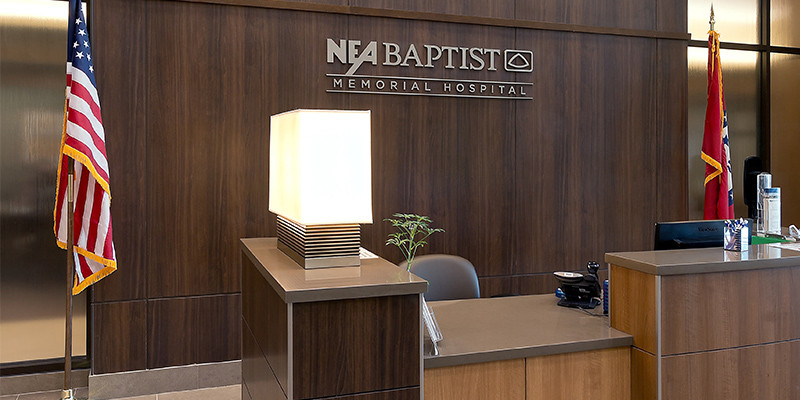
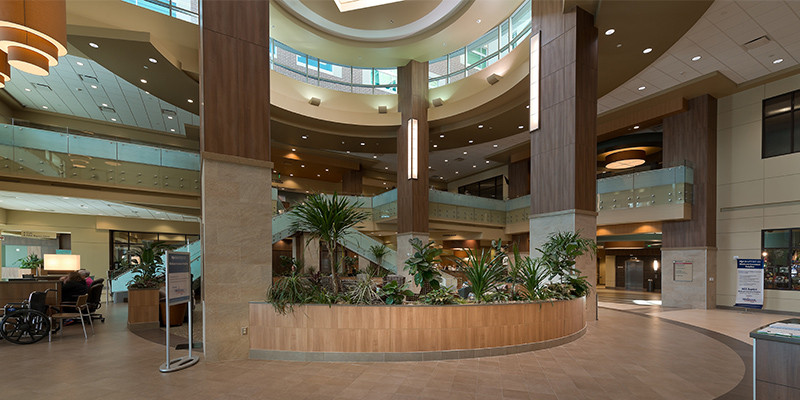
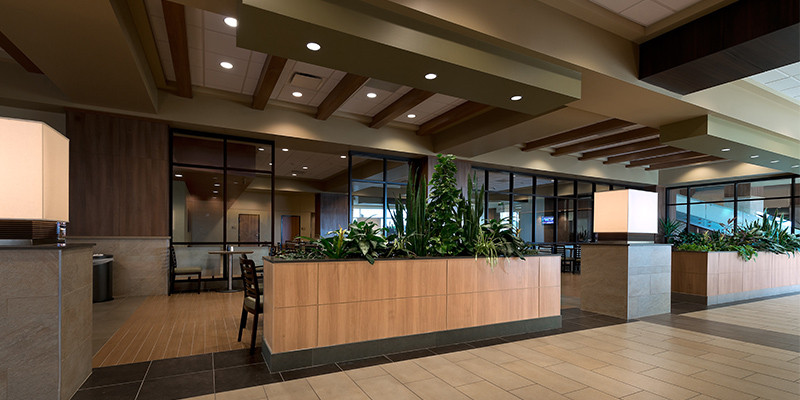
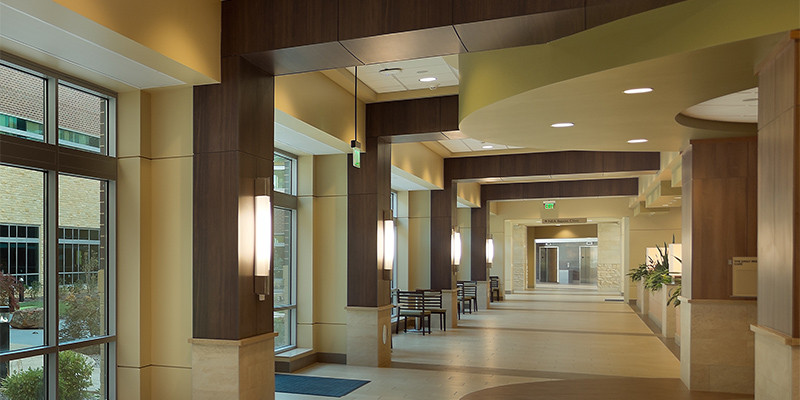
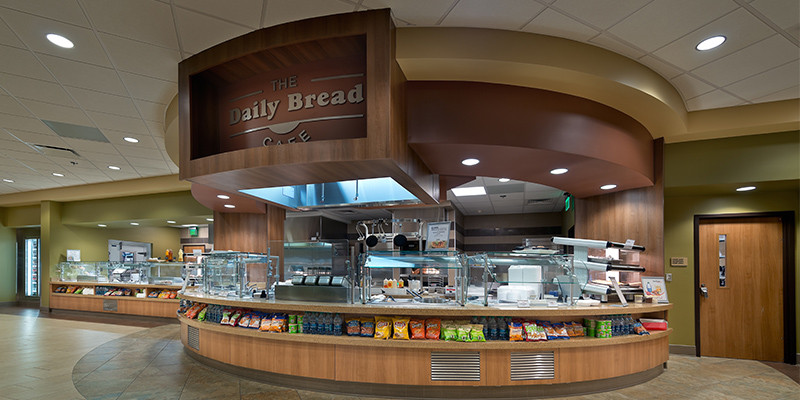
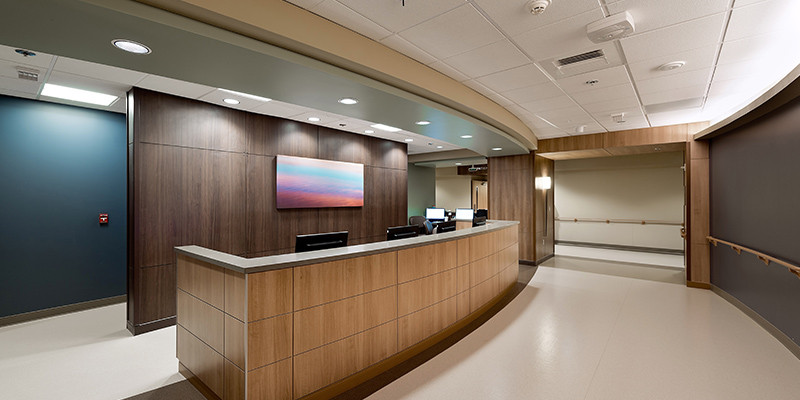
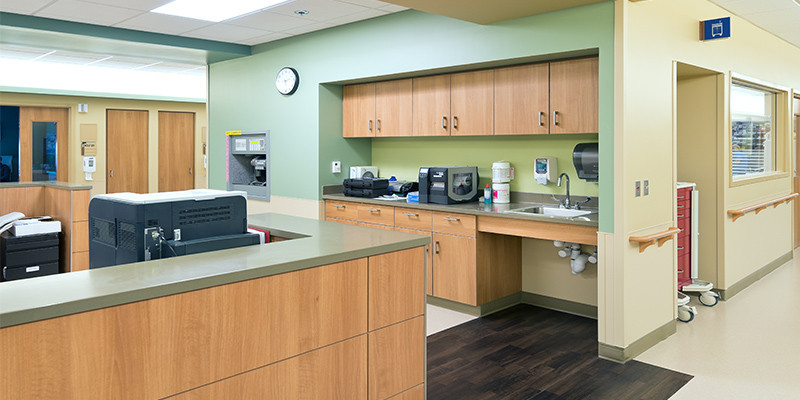




Sign In
Register